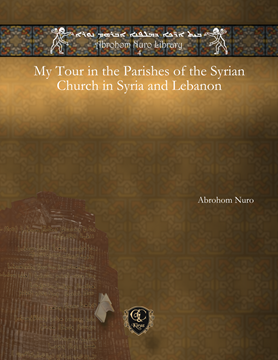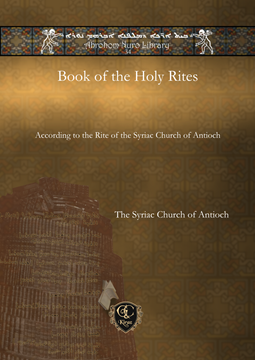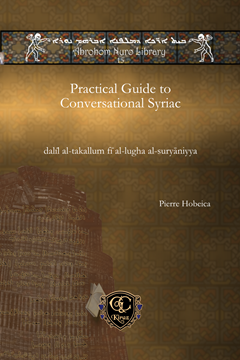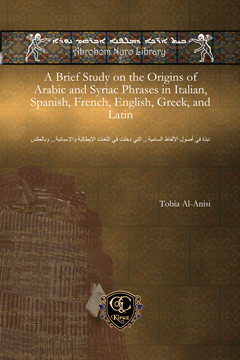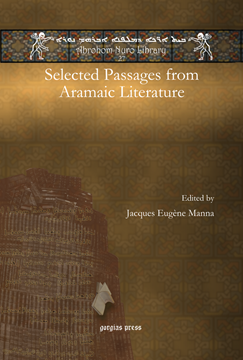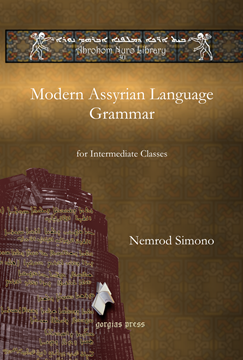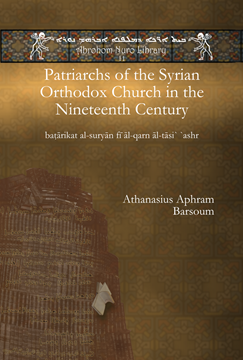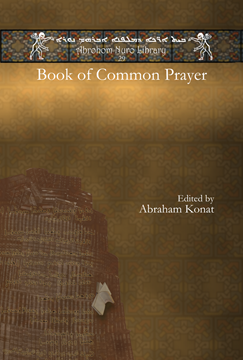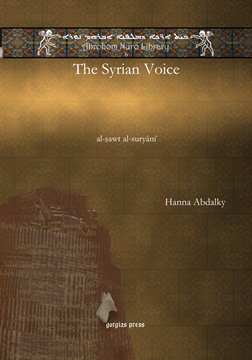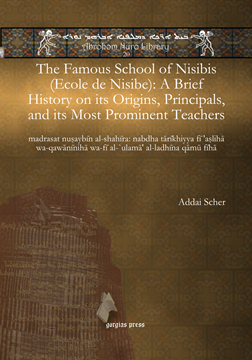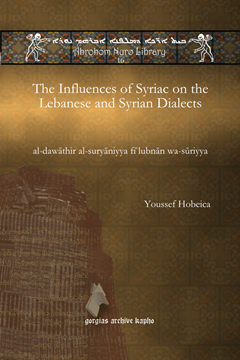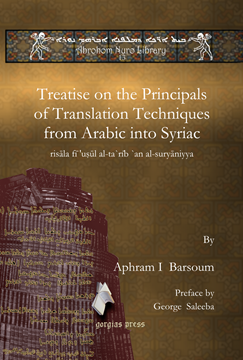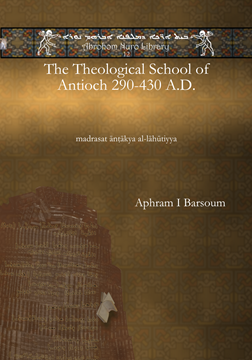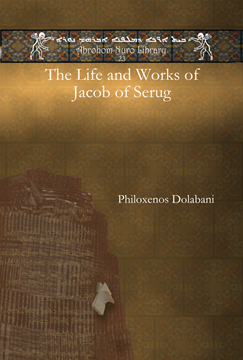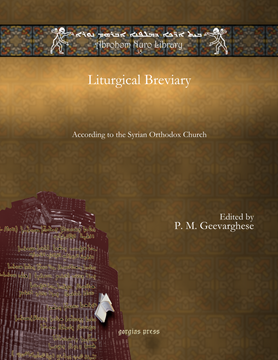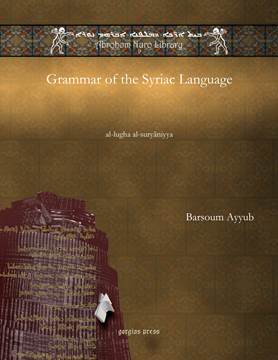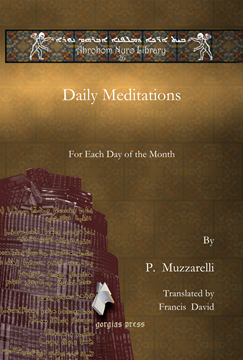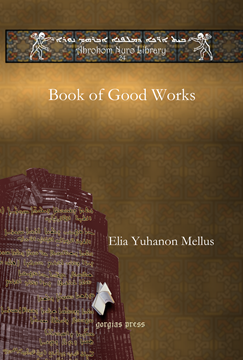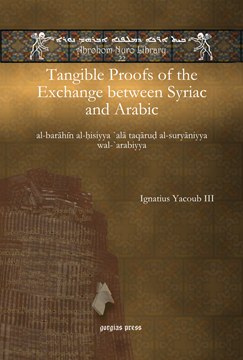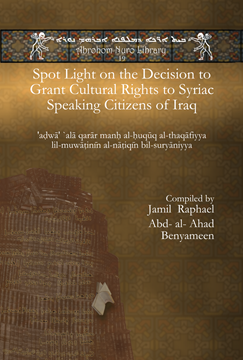Abrohom Nuro Library
The series contains reprints from rare books that once belonged to the Abrohom Nuro library. These books can hardly be found in Western university libraries. The content is primarily on Syriac studies and Eastern Christianity.
My Tour in the Parishes of the Syrian Church in Syria and Lebanon
By Abrohom Nuro
Series: Abrohom Nuro Library 4
ISBN: 978-1-60724-685-5
A record of the author’s investigation concerning the situation of the Syriac-speaking churches during the 1960s. The author provides statistics about parishes, schools, organizations, and cultural activities. The book lists most of the educational institutions with hundreds of photographs, as well as biographies and photos of Syriac writers and Orientalists specializing in Syriac studies.
$208.00 (USD)
Book of the Holy Rites
According to the Rite of the Syriac Church of Antioch
Series: Abrohom Nuro Library 34
ISBN: 978-1-61143-348-7
The present volume contains the Syriac text for the liturgies of the seven holy sacraments according to the rite of the Syriac Catholic Church of Antioch.
$192.00 (USD)
Practical Guide to Conversational Syriac
dalīl al-takallum fī al-lugha al-suryāniyya
Series: Abrohom Nuro Library 15
ISBN: 978-1-61719-460-3
This is a beginner’s guide to conversational Syriac with translations in French and Arabic.
$46.00 (USD)
A Brief Study on the Origins of Arabic and Syriac Phrases in Italian, Spanish, French, English, Gree
نبذة في أصول الألفاظ السامية... التي دخلت في اللغات الإيطالية والإسبانية... وبالعكس
Series: Abrohom Nuro Library 7
ISBN: 978-1-61719-452-8
This book outlines the connections between the Arabic and European languages, giving a brief listing of European words and phrases with their Arabic equivalent.
$54.00 (USD)
Non-Native Borrowings into the Lebanese Syrian Dialect
gharā'ib al-lahja al-lubnāniyya al-sūriyya
Series: Abrohom Nuro Library 18
ISBN: 978-1-61719-463-4
In comparing the formal Arabic language with colloquial Lebanese Syrian Arabic, Raphael Nakhla Al-Yasou`y finds a large list of foreign words that have unknowingly worked their way into the local dialect.
$81.00 (USD)
Selected Passages from Aramaic Literature
Edited by Jacques Eugène Manna
Series: Abrohom Nuro Library 27
ISBN: 978-1-61143-341-8
The present volume is a chrestomathy of Aramaic (Syriac) literature including selections from the Bible, various patristic authors, and ecclesiastical leaders in the Syriac tradition.
$284.00 (USD)
Modern Assyrian Language Grammar
for Intermediate Classes
Series: Abrohom Nuro Library 30
ISBN: 978-1-61143-344-9
Nemrod Simono’s intermediate grammar for Modern Assyrian that serves as a follow up to his beginner’s grammar. The volume includes exercises for self-guided study.
$153.00 (USD)
Patriarchs of the Syrian Orthodox Church in the Nineteenth Century
baṭārikat al-suryān fī āl-qarn āl-tāsi` `ashr
Series: Abrohom Nuro Library 11
ISBN: 978-1-61719-456-6
A history of the Syrian Orthodox Patriarchs of the nineteenth century as they struggle against political, internal, and external opposition.
$112.00 (USD)
Book of Common Prayer
Edited by Abraham Konat
Series: Abrohom Nuro Library 29
ISBN: 978-1-61143-343-2
This volume presents the Syriac text of the Book of Common Prayer according to the rite of the Syriac Orthodox Church as practiced by the Malankara Christians of India.
$170.00 (USD)
The Syrian Voice
al-ṣawt al-suryānī
Series: Abrohom Nuro Library 6
ISBN: 978-1-61719-451-1
This book speaks of the internal struggle that arose within the Syrian Orthodox Church in the twentieth century.
$52.00 (USD)
A Brief History on its Origins, Principals, and its Most Prominent Teachers
madrasat nuṣaybīn al-shahīra: nabdha tārīkhiyya fī ’aṣlihā wa-qawānīnihā wa-fī al-`ulamā’ al-ladhīna qāmū fīhā
By Addai Scher
Series: Abrohom Nuro Library 20
ISBN: 978-1-61719-465-8
This is a brief history of the life of the School of Nisibis, its teachings, traditions, and influence.
$46.00 (USD)
The Influences of Syriac on the Lebanese and Syrian Dialects
al-dawāthir al-suryāniyya fī lubnān wa-sūriyya
Series: Abrohom Nuro Library 16
ISBN: 978-1-61719-461-0
This book presents a look at the effects of the Aramaic language as it appears in Lebanon and Syria.
$61.00 (USD)
Treatise on the Principals of Translation Techniques from Arabic into Syriac
risāla fī ’uṣūl al-ta`rīb `an al-suryāniyya
By Aphram I Barsoum; Preface by George Saleeba
Series: Abrohom Nuro Library 13
ISBN: 978-1-61719-458-0
Author Ephraam Barsom deliberates on the logistics of translation versus transliteration of Syriac into Arabic. This is a great read for anyone interested in the translation of Syriac into Arabic.
$115.00 (USD)
The Theological School of Antioch 290-430 A.D.
madrasat ānṭākya al-lāhūtiyya
Series: Abrohom Nuro Library 12
ISBN: 978-1-61719-457-3
An essay expounding the historical rise and decline of the Theological School of Antioch.
$103.00 (USD)
The Crusades in Syrian Monuments
al-ḥurūb al-ṣalībiyya fī al-āthār al-suryāniyya
Series: Abrohom Nuro Library 8
ISBN: 978-1-61719-453-5
An account of the Crusades from the Syrian perspective as detailed by the priest Isaac Armala. A non-Western account of the epic battle perfect for students of history.
$92.00 (USD)
The Life and Works of Jacob of Serug
Series: Abrohom Nuro Library 23
ISBN: 978-1-61143-337-1
Philoxenos Dolabani provides a brief biographical introduction to Jacob of Serug, including a survey of his life and works.
$104.00 (USD)
The Rite of Burial for the Order of Priests
Edited by Abraham Konat
Series: Abrohom Nuro Library 28
ISBN: 978-1-61143-342-5
This volume presents the Syriac and Malayalam texts for the rite of the burial of priests in the Malankara Syriac tradition.
$171.00 (USD)
Liturgical Breviary
According to the Syrian Orthodox Church
Edited by P. M. Geevarghese
Series: Abrohom Nuro Library 35
ISBN: 978-1-61143-349-4
This work is the breviary for the Eastern Syriac tradition, containing daily liturgical prayers
$188.00 (USD)
Grammar of the Syriac Language
al-lugha al-suryāniyya
Series: Abrohom Nuro Library 9
ISBN: 978-1-61719-454-2
This is a thorough academic tutorial of the Syriac language beginning with its history and ending with the learning of the language itself.
$145.00 (USD)
Book of Refutations against the Claims of the Pope
Series: Abrohom Nuro Library 36
ISBN: 978-1-61143-350-0
The present work is an argument against the authority of the pope on the grounds of misinterpretation of the concept of apostolic succession.
$115.00 (USD)
Daily Meditations
For Each Day of the Month
By P. Muzzarelli; Translated by Francis David
Series: Abrohom Nuro Library 26
ISBN: 978-1-61143-340-1
This small volume presents a daily devotional meditation for each day of the month.
$152.00 (USD)
Book of Good Works
Series: Abrohom Nuro Library 24
ISBN: 978-1-61143-338-8
Mor Elia Yuhanon Mellus presents a book of Syriac hymns and poems, mostly by John of Mosul, intended to educate Syriac Christians about their heritage.
$154.00 (USD)
Tangible Proofs of the Exchange between Syriac and Arabic
al-barāhīn al-ḥisiyya `alā taqāruḍ al-suryāniyya wal-`arabiyya
Series: Abrohom Nuro Library 22
ISBN: 978-1-61719-469-6
In this linguistics book, Ignatius Yacoub III documents the relationship between the Syriac and Arabic languages; postulating that both are intrinsic to the study of the other.
$155.00 (USD)
Spot Light on the Decision to Grant Cultural Rights to Syriac Speaking Citizens of Iraq
'aḍwā' `alā qarār manḥ al-ḥuqūq al-thaqāfiyya lil-muwāṭinīn al-nāṭiqīn bil-suryāniyya
Compiled by Jamil Raphael & Abd- al- Ahad Benyameen
Series: Abrohom Nuro Library 19
ISBN: 978-1-61719-464-1
This is a book filled with documents, details and glimpses of Syria after its government granted cultural rights to its Syriac speaking citizens.
$120.00 (USD)
Aramaic Languages and their Study
āl-lugha āl-ārāmiyya wa-ādābuhā
Series: Abrohom Nuro Library 14
ISBN: 978-1-61719-459-7
An Overview of the compilation and history of the Aramaic Language from various dialects.
$109.00 (USD)
- 1
- 2

